Themed collection International Symposium on Green Chemistry 2019

The periodic table of the elements of green and sustainable chemistry
Achieving a sustainable future will only be possible through the intersection of the best science and technology in combination with the societal, economic, policy, cultural, moral, and ethical ecosystem.
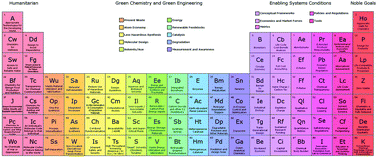
Green Chem., 2019,21, 6545-6566
https://doi.org/10.1039/C9GC01293A
Ultrasound and microwave irradiation: contributions of alternative physicochemical activation methods to Green Chemistry
This perspective article reviews the evolution of research practices and challenges reported in the literature for the use of ultrasound (US) and microwave (MW) in greener chemical processes.

Green Chem., 2019,21, 6043-6050
https://doi.org/10.1039/C9GC02534K
Ionic liquids as an enabling tool to integrate reaction and separation processes
This tutorial review highlights representative examples of ionic liquid (IL)-based (bio)catalytic systems integrating reaction and separation, as a tool for the development of sustainable chemical processes (e.g. IL/scCO2 biphasic reactors, membrane reactors, nanodrop systems, microfluidic devices, supported IL phases, sponge-like ILs, etc.).
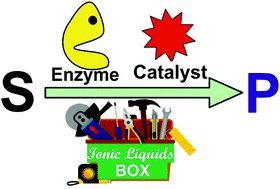
Green Chem., 2019,21, 6527-6544
https://doi.org/10.1039/C9GC02553G
Covalent triazine frameworks – a sustainable perspective
Rise of porous covalent triazine frameworks (CTFs) for sustainable applications.
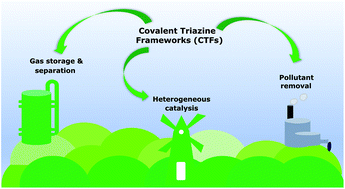
Green Chem., 2020,22, 1038-1071
https://doi.org/10.1039/C9GC03482J
Recent advances in N-formylation of amines and nitroarenes using efficient (nano)catalysts in eco-friendly media
N-Formylation of amines or nitroarenes in water, polyethylene glycol, and ionic liquids, as well as under solvent-free conditions, is summarized.
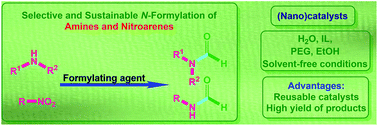
Green Chem., 2019,21, 5144-5167
https://doi.org/10.1039/C9GC01822K
Catalytic oxidative dehydrogenation of malic acid to oxaloacetic acid
Here we report the oxidative dehydrogenation of malic acid to oxaloacetic acid, a key precursor in the fabrication of amino acids, over Pt–Bi/C catalysts.
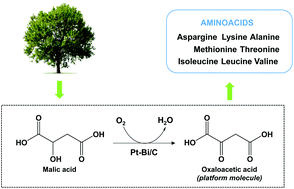
Green Chem., 2019,21, 4604-4608
https://doi.org/10.1039/C9GC01768B
Covalent triazine framework/carbon nanotube hybrids enabling selective reduction of CO2 to CO at low overpotential
Nitrogen-rich covalent triazine frameworks (CTFs) were grown in situ onto surface-functionalized carbon nanotubes. These novel hybrid catalysts electrochemically reduce CO2 to CO with a faradaic efficiency up to 81% at an overpotential of 380 mV.
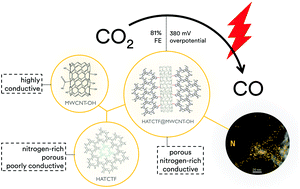
Green Chem., 2020,22, 3095-3103
https://doi.org/10.1039/D0GC00090F
Humin based resin for wood modification and property improvement
Focus on humins, a co-product from sugar conversion, to highlight their capacity to impregnate wood cell walls for making durable wood products.

Green Chem., 2020,22, 2786-2798
https://doi.org/10.1039/C9GC03620B
Nickel on nitrogen-doped carbon pellets for continuous-flow hydrogenation of biomass-derived compounds in water
A cheap, scalable and efficient nickel catalyst on nitrogen-doped carbon for the aqueous-phase hydrogenation of biomass-derived compounds in flow system.
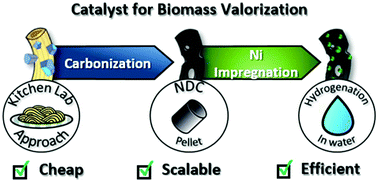
Green Chem., 2020,22, 2755-2766
https://doi.org/10.1039/C9GC03826D
Novel insights into biomass delignification with acidic deep eutectic solvents: a mechanistic study of β-O-4 ether bond cleavage and the role of the halide counterion in the catalytic performance
The potentiality of acidic deep eutectic solvents for β-O-4 ether bond cleavage is herein demonstrated from a mechanistic point of view.
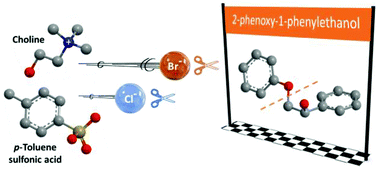
Green Chem., 2020,22, 2474-2487
https://doi.org/10.1039/C9GC02569C
Ni-Catalyzed reductive amination of phenols with ammonia or amines into cyclohexylamines
An efficient reductive amination of phenol with ammonia or amines is demonstrated, for the first time with cheap supported Ni catalysts and without using any additives.
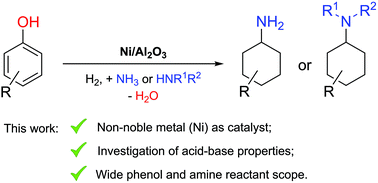
Green Chem., 2020,22, 1884-1893
https://doi.org/10.1039/C9GC02625H
Tuning Ca–Al-based catalysts’ composition to isomerize or epimerize glucose and other sugars
Efficient and selective glucose isomerization to fructose and epimerization to mannose were successfully done over tuneable Ca–Al-based catalysts with controlled basicity.

Green Chem., 2020,22, 1393-1405
https://doi.org/10.1039/C9GC02823D
Pentanoic acid from γ-valerolactone and formic acid using bifunctional catalysis
The production of pentanoic acid from γ-valerolactone and the one-pot route from levulinic acid both over bifunctional catalyst with formic acid as H2 source is an example for an integrated biorefinery in the direction to an industrial application.
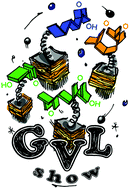
Green Chem., 2020,22, 1171-1181
https://doi.org/10.1039/C9GC02627D
Novel heterogeneous ruthenium racemization catalyst for dynamic kinetic resolution of chiral aliphatic amines
Only few dynamic kinetic resolution (DKR) systems are known for chiral aliphatic amines due to the difficult racemization of these amines.
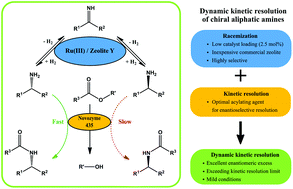
Green Chem., 2020,22, 85-93
https://doi.org/10.1039/C9GC02615K
“Water soluble” palladium nanoparticle engineering for C–C coupling, reduction and cyclization catalysis
Water stable Pd-NPs prepared in an eco-friendly manner enable highly efficient catalysis of 6 organic reactions in aqueous media with quantities of Pd down to the ppm level and high turnover frequencies.
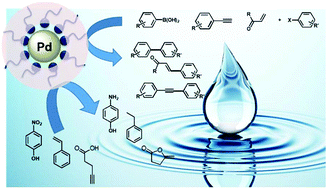
Green Chem., 2019,21, 6646-6657
https://doi.org/10.1039/C9GC02546D
Regioselective synthesis, isomerisation, in vitro oestrogenic activity, and copolymerisation of bisguaiacol F (BGF) isomers
Biobased ortho-methoxy groups ameliorate classic bisphenol chemistry in terms of synthesis, safety and processing; bisguaiacol F is used as a test case.
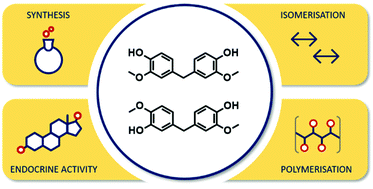
Green Chem., 2019,21, 6622-6633
https://doi.org/10.1039/C9GC02619C
Cellulose conversion into lactic acid over supported HPA catalysts
One-pot hydrothermal conversion of biomass into lactic acid over a green heterogeneous bifunctional catalyst.

Green Chem., 2019,21, 6161-6178
https://doi.org/10.1039/C9GC02622C
Solvent basicity controlled deformylation for the formation of furfural from glucose and fructose
Furfural was synthesized from hexose sugars instead of 5-HMF by using polar aprotic solvents with very low basicity.
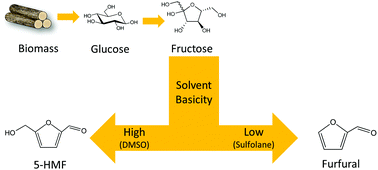
Green Chem., 2019,21, 6146-6153
https://doi.org/10.1039/C9GC02600B
Selective hydrogenolysis of 2-furancarboxylic acid to 5-hydroxyvaleric acid derivatives over supported platinum catalysts
Pt catalysts, especially supported on Al2O3, are effective for hydrogenolysis of 2-furancarboxylic acid to 5-hydroxyvaleric acid (5-HVA) and its derivatives (ester and δ-valerolactone), and the highest yield of 5-HVA derivatives was 62%.

Green Chem., 2019,21, 6133-6145
https://doi.org/10.1039/C9GC03315G
Room temperature, near-quantitative conversion of glucose into formic acid
Herein, a facile and efficient method was developed to selectively transform glucose into formic acid at room temperature.

Green Chem., 2019,21, 6089-6096
https://doi.org/10.1039/C9GC02201E
Sn–Al-USY for the valorization of glucose to methyl lactate: switching from hydrolytic to retro-aldol activity by alkaline ion exchange
The catalytic activity of Sn–Al-USY zeolites is switched from hydrolytic to retro-aldol condensation for the transformation of glucose to methyl lactate.
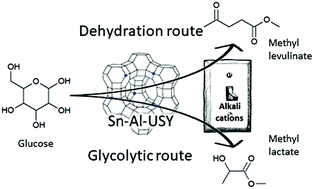
Green Chem., 2019,21, 5876-5885
https://doi.org/10.1039/C9GC02609F
Deep eutectic solvents for Cu-catalysed ARGET ATRP under an air atmosphere: a sustainable and efficient route to poly(methyl methacrylate) using a recyclable Cu(II) metal–organic framework
A new environmentally-friendly and air-tolerant protocol for the Cu-MOF catalysed ATRP of MMA in a biorenewable deep eutectic solvent is reported, with both the solvent and catalyst being recycled up to six consecutive times.
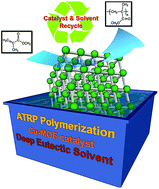
Green Chem., 2019,21, 5865-5875
https://doi.org/10.1039/C9GC02624J
Niobium oxide prepared through a novel supercritical-CO2-assisted method as a highly active heterogeneous catalyst for the synthesis of azoxybenzene from aniline
High-surface area Nb2O5 nanoparticles synthesised by a novel supercritical-CO2-assisted method displayed extremely high activity as heterogeneous catalyst in the oxidative coupling of aniline to azoxybenzene using the green oxidant H2O2.

Green Chem., 2019,21, 5852-5864
https://doi.org/10.1039/C9GC02623A
Reductive catalytic fractionation of black locust bark
During reductive catalytic fractionation of black locust bark, lignin and suberin are simultaneously depolymerized and stabilized. This results in low MW phenolics and long-chain, α,ω-bifunctional aliphatics.
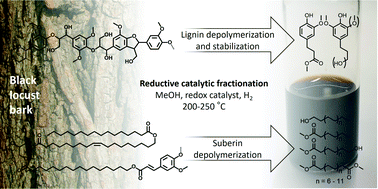
Green Chem., 2019,21, 5841-5851
https://doi.org/10.1039/C9GC02139F
Valorization of monosaccharides towards fructopyrazines in a new sustainable and efficient eutectic medium
A new green and efficient approach for valorization of monosaccharides into value added chemicals by forming a eutectic medium between reactants.

Green Chem., 2019,21, 5256-5266
https://doi.org/10.1039/C9GC02176K
Methanesulfonic acid: a sustainable acidic solvent for recovering metals from the jarosite residue of the zinc industry
Leaching the industrial jarosite residue with pure methanesulfonic acid resulted in a solid–liquid separation of iron from dissolved lead and zinc by precipitation.
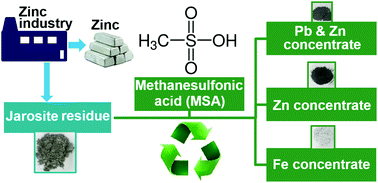
Green Chem., 2019,21, 5394-5404
https://doi.org/10.1039/C9GC02238D
Transfer hydrogenation of cyclic carbonates and polycarbonate to methanol and diols by iron pincer catalysts
The reduction of poly and cyclic carbonates in the presence of an earth abundant metal catalyst using isopropanol as the hydrogen donor is reported.
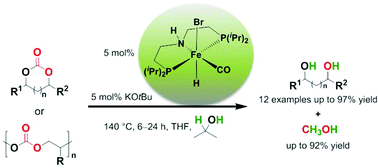
Green Chem., 2019,21, 5248-5255
https://doi.org/10.1039/C9GC02052G
Eco-efficient synthesis of 2-quinaldic acids from furfural
A three-step process to synthesize quinaldic acids from furfural was established.

Green Chem., 2019,21, 4650-4655
https://doi.org/10.1039/C9GC02206F
Base-free conversion of glycerol to methyl lactate using a multifunctional catalytic system consisting of Au–Pd nanoparticles on carbon nanotubes and Sn-MCM-41-XS
Base-free, multifunctional heterogenous catalytic systems for the highly efficient conversion of glycerol into methyl lactate.

Green Chem., 2019,21, 4115-4126
https://doi.org/10.1039/C9GC01521C
Synthesis of high molecular weight chitosan from chitin by mechanochemistry and aging
A process based on mechanochemistry and aging under humidity affords high molecular weight chitosan under safe conditions from chitin.
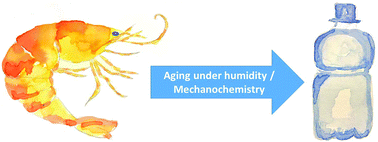
Green Chem., 2019,21, 3276-3285
https://doi.org/10.1039/C9GC00304E
About this collection
This collection comprises articles based on presentations at the International Symposium on Green Chemistry 2019 meeting held in La Rochelle, France between 13-17 May 2019.